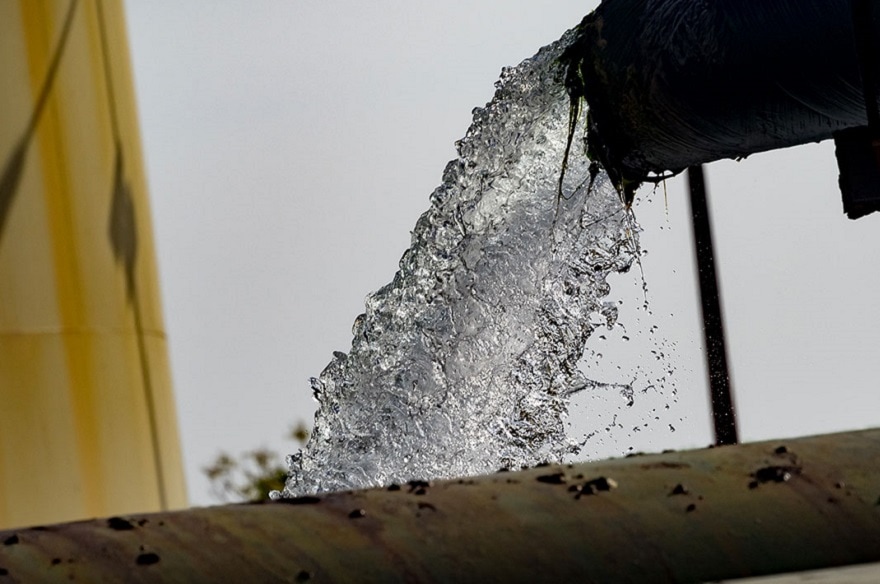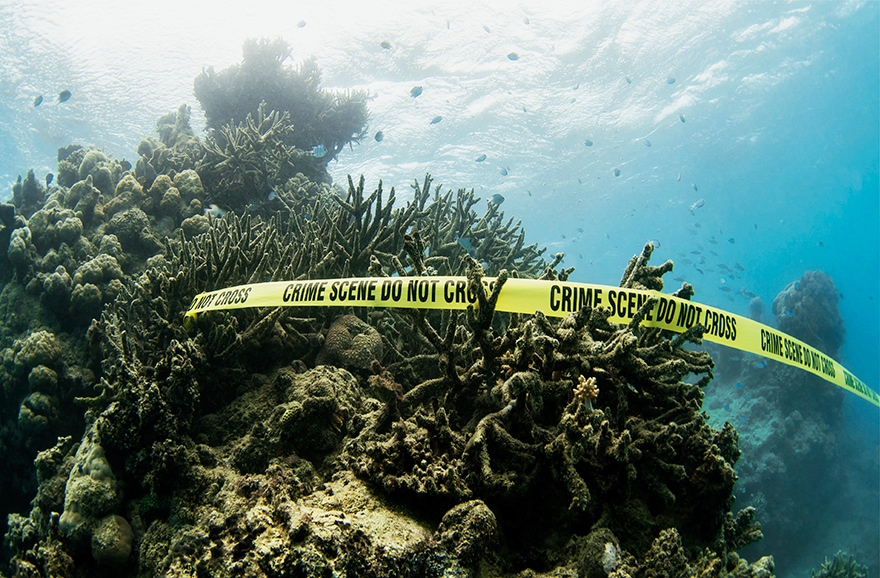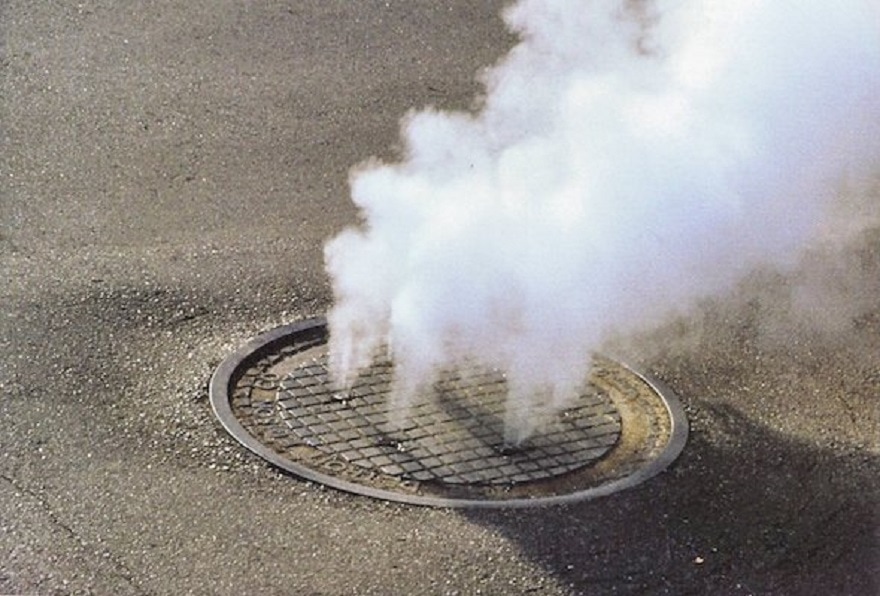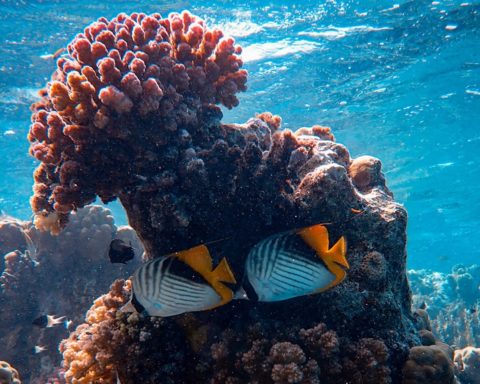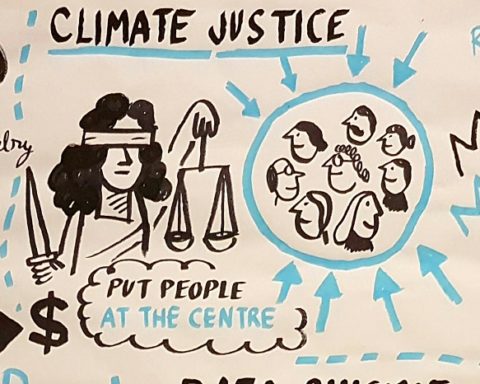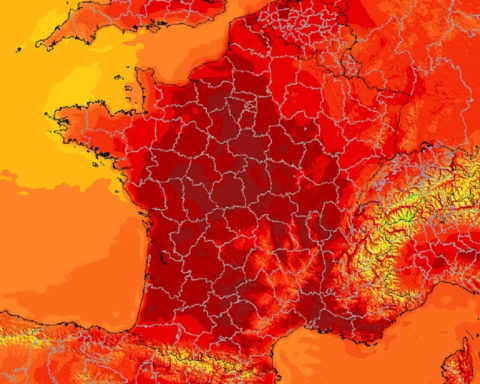About 15 kilometres south of Tel Aviv, standing on a footbridge above two concrete tanks the size of football fields, I watch the water pouring in from a huge pipe emerging from the sand. The pipe is so big that I could walk through it standing up if it wasn't filled with Mediterranean water pumped from an outlet more than a kilometre offshore.
"That's a pump!" Edo Bar-Zeev shouts at me, smiling over the din of the engines, with an undisguised amazement at the scene before our eyes. The tanks below contain more than a metre of sand, through which the sea water is filtered before arriving at a vast metal shed where it is transformed into drinking water that will be enough for the consumption of 1.5 million people.
We are overlooking the Sorek desalination plant, the largest reverse osmosis desalination plant in the world, and we are looking at the saviour of Israel. Just a few years earlier, in the midst of its worst drought in nearly a thousand years, Israel ran out of water. Now the country is in surplus. This remarkable reversal was accomplished with national campaigns to save and recycle Israel's scarce water resourcesbut the biggest impact came from the start-up of a series of desalination plants.

The Sorek desalination plant. Photo courtesy of IDE Technologies. CC-BY-NC-SA 2.0
Israel now draws 55 % of its domestic water from desalination, and this has helped make one of the world's most arid countries the most unlikely of water giants.
Bar-Zeev, who recently joined the Zuckerberg Institute for Hydrological Research in Israel after completing his post-doctorate at Yale University, is a specialist in biofouling, which has always been the Achilles heel of desalination and one of the reasons for its use as a last resort. The principle of desalination is to push salt water through membranes containing microscopic pores. The water passes through and the larger salt molecules remain on the other side. But microorganisms living in seawater quickly colonize the membranes and clog the pores, and controlling them requires periodic, expensive cleaning with large amounts of chemicals. Bar-Zeev and his colleagues have developed a system without chemicals which uses porous lava stones that trap microorganisms before they reach the membranes. This is just one of the many advances in membrane technology that have made desalination much more efficient. Israel now gets 55 % of its domestic water from desalination, and this has helped make one of the world's most arid countries the unlikeliest of water giants.
Driven by necessity, Israel is learning how to squeeze more out of a drop of water than any other country in the world, and much of that learning takes place at the Zuckerberg Institute, whose researchers have created pioneering techniques in drip irrigation, water treatment and desalination. They have developed resilient well systems for African villages and biological digesters that can halve water use in most households.
The institute's original mission was to improve life in the extremely dry Israeli Negev desert, but the lessons seem increasingly applicable to the entire Fertile Crescent. "The Middle East is drying up," says Osnat Gillor, a professor at the Zuckerberg Institute who studies the use of wastewater for agriculture. "The only country that does not suffer from acute water stress is Israel".
Water stress is a decisive factor in the turmoil that is tearing the Middle East apart, but Bar-Zeev is convinced that Israeli solutions can also help his thirsty neighbours - and in the process bring old enemies closer together in a common cause.
Bar-Zeev acknowledges that water is likely to be a source of conflict in the Middle East in the future. "But I believe that water can help bridge the gap, through joint ventures," he says. "And one of those joint ventures is desalination.
On the brink of despair
In 2008, Israel was on the brink of disaster. Ten years of drought had roasted the Fertile Crescent, and Israel's largest freshwater source, the Sea of Galilee, had dropped to within centimetres of the "black line" under which irreversible saline infiltration would have invaded the lake, damaging it forever. Water restrictions were imposed, and many farmers were forced to work in the lake. lost a year's worth of crops.
Their counterparts in Syria fared much worse. As the drought intensified and the level of the aquifer fell, Syrian farmers chased it down, drilling wells at 100, 200, and then 500 metres deep in a literal race to the bottom. Eventually the wells dried up and Syria's farmland disappeared in an epic dust storm. More than a million peasants moved into huge slums on the outskirts of Aleppo, Homs, Damascus and other cities in a vain attempt to find work and a reason to live.
And this was, according to the authors of "Climate change in the Fertile Crescent and the consequences of the recent drought in Syria", a 2015 article in the Proceedings of the National Academy of Sciences, the match that burned Syria to the ground. "Syria's fast-growing urban peripheries," they wrote, "marked by uncontrolled settlement, overcrowding, inadequate infrastructure, unemployment and crime, have been neglected by the Assad government and have become the centre of smouldering unrest".
Similar scenarios are unfolding throughout the Middle East, where drought and agricultural collapse have produced a lost generation with no prospects and resentment is bubbling. Iran, Iraq and Jordan all face water disasters. Water is leading the entire region to desperate acts.
More water than you need.
With the exception of Israel. Extraordinary: Israel has more water than it needs. The situation began to turn around in 2007, when low-water consumption toilets and showerheads were installed throughout the country and the national water utility built innovative water treatment systems that recapture 86 per cent of the water in the sewers and use it for irrigation - far more than the second most efficient country in the world, Spain, which recycles 19 per cent.
But even with these provisions, Israel still needed 1.9 billion cubic metres of fresh water per year and obtained only 1.4 billion cubic metres from natural sources. This deficit of 500 million cubic metres explained why the Sea of Galilee was emptying like a bathtub and why the country was on the verge of losing its peasants.
The country is faced with a question it never imagined before: what to do with this extra water?
This is where desalination comes in. In 2005, the Ashkelon plant supplied 127 million cubic metres of water. Hadera, in 2009, added 140 million cubic metres. And now Sorek, 150 million cubic metres. At the very least, desalination plants can provide some 600 million cubic metres of water per year. More are on the way.
The Sea of Galilee is more crowded. The farms of Israel prosper. And the country is faced with a question it never imagined before: what to do with this extra water?
Water diplomacy
Inside the Sorek plant, 50,000 membranes enclosed by white vertical cylinders, 1.20 metres high and 40.6 cm in diameter, hum like aircraft engines. The whole installation is reminiscent of a spacecraft pulsating before take-off. The cylinders contain sheets of plastic membrane wrapped around a central tube, and the membranes are studded with pores a hundred times smaller in diameter than a human hair. Water precipitates into the cylinders at a pressure of 70 atmospheres and is forced through the membranes, while the remaining salt water is discharged into the sea.
Desalination was considered energy-intensive, until the advanced technologies in use in Sorek changed the rules of the game. Water produced by desalination costs only a third of the price of the 1990s. Sorek manages to produce one thousand litres of drinking water for 51 cents. Israeli households pay about US$30 (€26.50) a month for their water - like households in most U.S. cities, and much less than in Las Vegas ($47, €41.50) or Los Angeles ($58, €51).
The International Desalination Association states that 300 million people receive their water by desalinationand that number is growing rapidly. IDE, the Israeli company that built the Ashkelon, Hadera and Sorek plants, has just completed the Carlsbad desalination plant in Southern California, a cousin of its Israeli facility, and has a full order book. Worldwide, the equivalent of six new Soreks are commissioned each year. The era of desalination has arrived.
What Bar-Zeev is most excited about is the opportunity for water diplomacy. Israel supplies the West Bank with water, as required by the 1995 Oslo II agreements, but despite this the Palestinians continue to receive far less than they need. The water issue has become entangled in the other negotiations of a bogged-down peace process, but now, with something new at hand, many observers see an opportunity to de-politicize it. Bar-Zeev has ambitious plans for a Water Without Borders conference in 2018, which will bring people together for a meeting of minds.
Even more ambitious, the $900 million ('795 million) project at Red Sea - Dead Sea Canala joint venture between Israel and Jordan to build a large desalination plant on the Red Sea, where the two countries share a common border, and to distribute water between Israelis, Jordanians and Palestinians. Saltwater discharges from the plant will be channelled through a 150-kilometre pipeline north through Jordanian territory to refill the Dead Sea, whose level has been dropping by one metre a year since the two countries began diverting the only river that feeds it in the 1960s. By 2020, the two old enemies will be drinking from the same tap.
At the other end of the Sorek plant, Bar-Zeev and I are also sharing a tap. Bypassing the main line where Sorek water enters the Israeli water network is a simple small tap, flanked by a cardboard cup dispenser. I open the tap and drink one cup after another from what used to be the Mediterranean Sea 40 minutes before. Impression? It's fresh, clear and miraculous.
The contrast couldn't be more striking. A few miles from here, the water has disappeared and civilization has collapsed. Here, a galvanized civilization created water out of nothing. As Bar-Zeev and I drink, and the climate sizzles, I wonder which of these stories will be the exception, and which will be the rule.
Rowan Jacobsen
Rowan Jacobsen received the James Beard Foundation Award for his books Fruitless Fall, The Living Shore, Shadows on the Gulf, among others. He writes frequently in Outside, Harper's, Mother Jones, Orion and other magazines, and his work has appeared in anthologies of Best American Science and Nature Writing and other collections. His next book, Apples of Uncommon Character, will be published in September. His Twitter account is @rowanjacobsen.
This article by Rowan Jacobsen has been originally published on Ensia.com, magazine dedicated to concrete environmental solutions around the world, and is reproduced here under a content sharing agreement.

